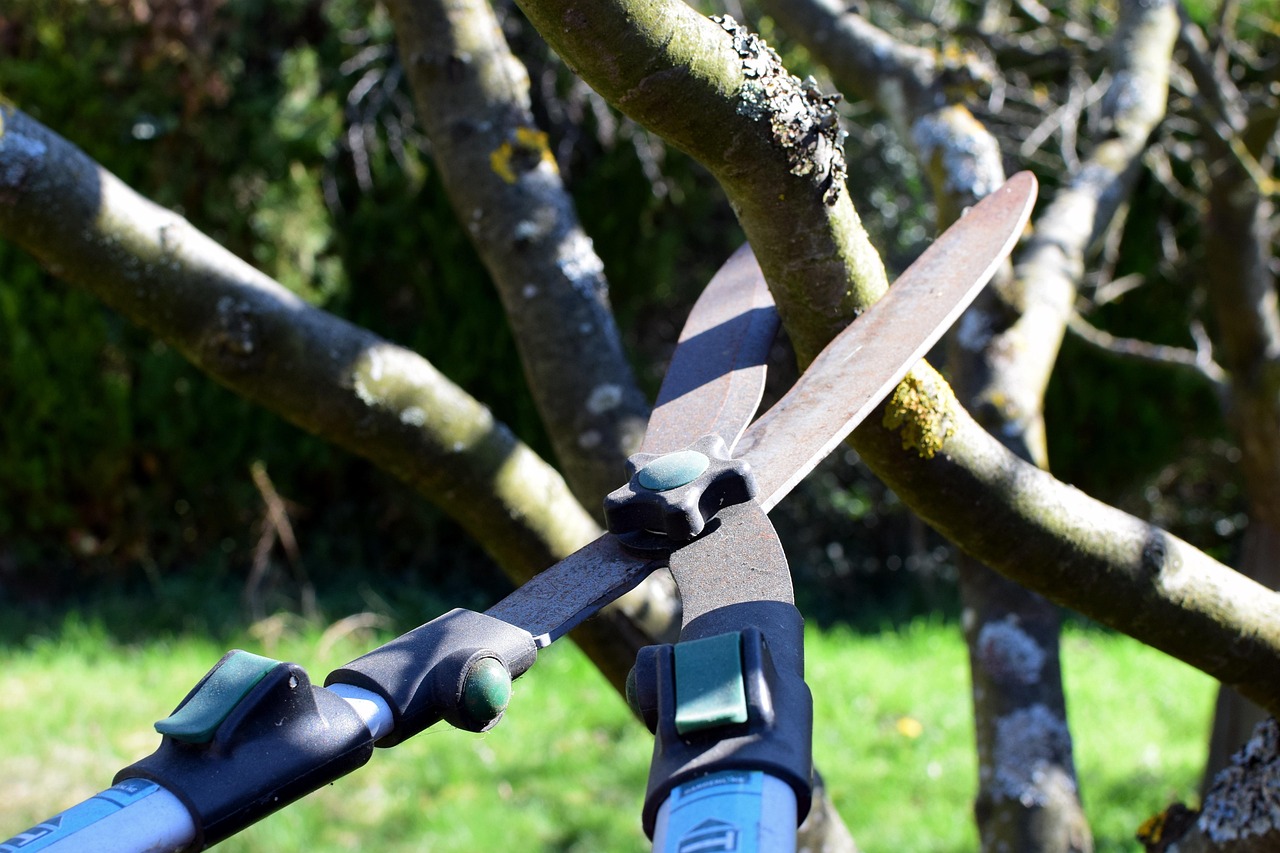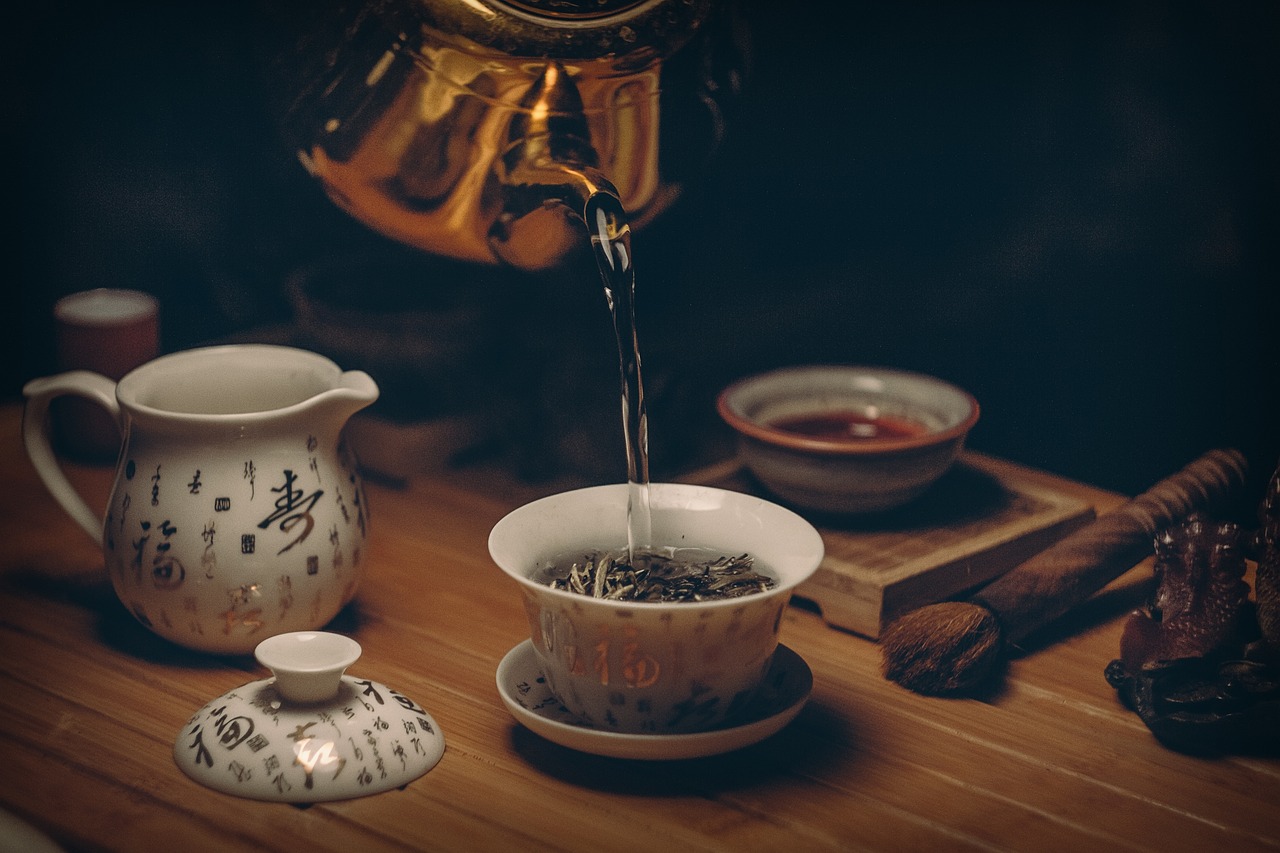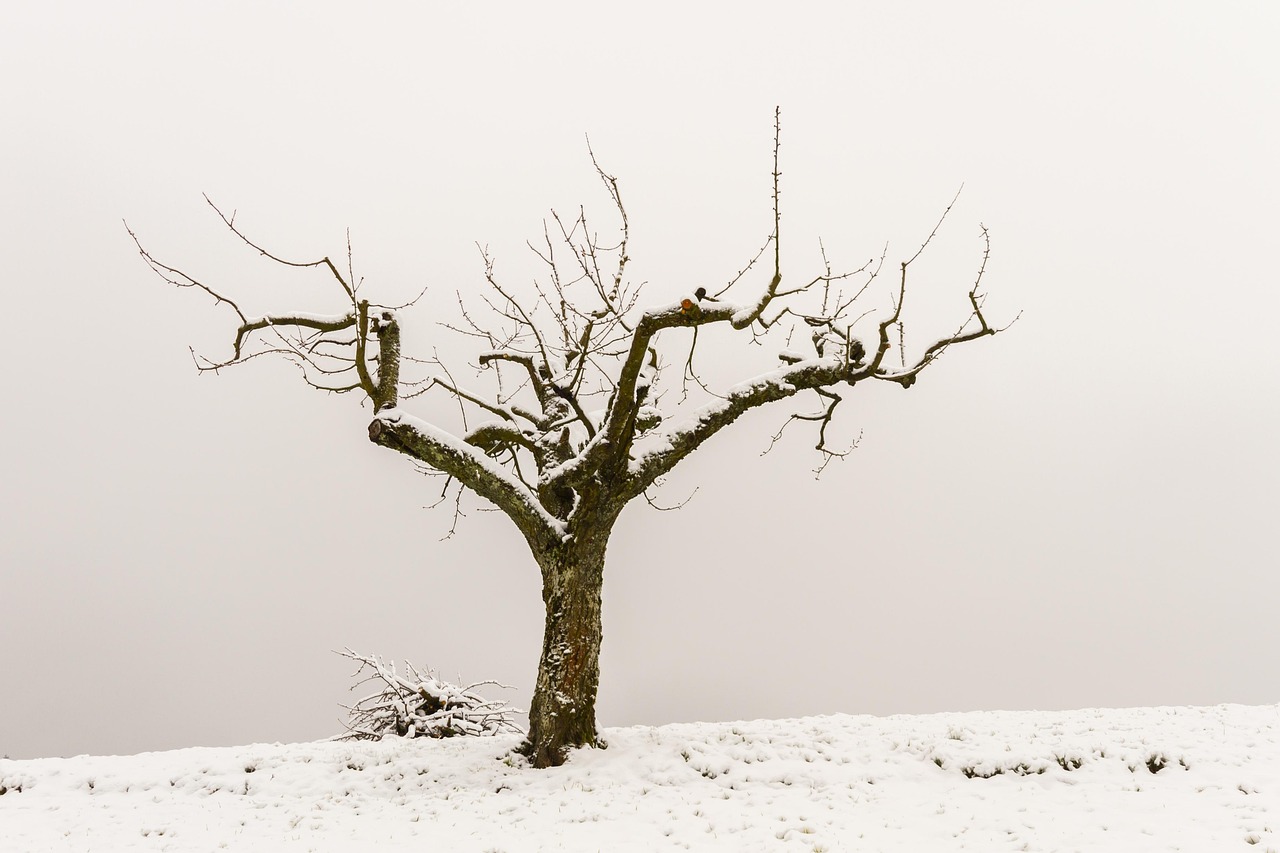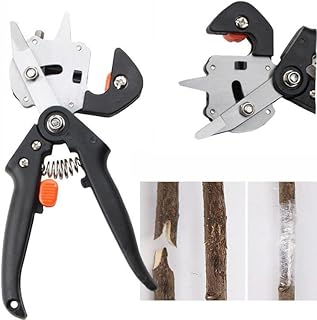Pruning tea trees in home herb gardens enhances plant health, encourages growth, and maximizes oil production. Proper techniques, timing, and tools are essential for effective pruning and maintaining an attractive appearance.
Tea trees, especially the Melaleuca alternifolia species, are well-known for their essential oil derived from the leaves. This oil is famous for its antiseptic and antibacterial properties. As a result, many home gardeners cultivate tea trees not just for their beauty but also for their practical uses in health and wellness. However, to ensure that these trees thrive, regular pruning is essential.

Pruning tea trees can seem daunting at first, but with the right knowledge and techniques, it becomes a manageable task. Understanding the structure of the plant and its growth habits is key to effective pruning. Tea trees can grow quite tall and bushy if left unchecked. Without regular pruning, they can become leggy and less productive.
Why Prune Tea Trees?
Pruning serves several important purposes for tea trees in your herb garden:
- Promotes Healthy Growth: Regular pruning encourages new growth and helps the plant maintain a balanced shape.
- Enhances Airflow: An open canopy allows better air circulation, reducing the risk of fungal diseases.
- Increases Oil Production: Properly pruned tea trees often produce higher quantities of essential oils.
- Aesthetic Appeal: Pruning shapes the tree, making it more visually appealing in your garden.
Knowing when and how to prune your tea tree is vital. Pruning typically occurs during the tree’s active growing season, which is spring through early summer. This timing helps the plant recover quickly from any cuts made during the process.

Tools for Pruning Tea Trees
To effectively prune your tea tree, having the right tools is essential. Here are some recommended tools:
| Tool | Description |
|---|---|
| Pruning Shears | Ideal for cutting small branches and stems. |
| Loppers | Best for thicker branches that are more than half an inch in diameter. |
| Saw | A small hand saw is useful for larger branches that require more force. |
| Gloves | Protect your hands while handling sharp tools and plants. |
| Bucket or Tarp | Helps collect cuttings for easy cleanup. |
Pruning Techniques
Several techniques can be employed when pruning tea trees. The following methods will help you achieve optimal results:
Crown Thinning
This technique involves selectively removing branches from the tree’s canopy. It increases light penetration and air circulation while maintaining the overall shape of the tree. Focus on removing crowded branches and any that cross each other.

Crown Reduction
Crown reduction entails shortening the height of the tree. This is particularly useful for tea trees that have grown too tall. When reducing height, make cuts just above a node or a healthy lateral branch to promote new growth.
Deadheading
This method focuses on removing spent flowers or damaged foliage. Regular deadheading encourages new blooms and keeps your tree looking tidy. It also prevents energy loss by redirecting resources to healthier parts of the plant.
When to Prune
The timing of your pruning efforts is crucial for success. Here are some guidelines on when to prune your tea trees:

- Spring: Ideal time for major pruning as the tree begins active growth.
- Early Summer: Best time for minor adjustments and maintenance pruning.
- Avoid Late Fall/Winter: Pruning during this period can stress the tree as it enters dormancy.
Understanding these aspects of tea tree pruning will set you on a path to creating a flourishing herb garden. With practice and attention, you’ll enjoy the benefits of healthy plants and a bountiful supply of essential oils from your tea trees.
Post-Pruning Care for Tea Trees
After you have finished pruning your tea trees, it is vital to provide them with proper care to ensure they recover well. This care will help the plants thrive and continue to produce healthy leaves for your herb garden. Here are some essential post-pruning care tips:
Watering
Watering is critical after pruning. The tree may face stress due to the loss of foliage, so adequate hydration is necessary. Follow these guidelines:
- Immediate Watering: Water the tree immediately after pruning to help it recover from the shock.
- Consistent Moisture: Keep the soil consistently moist but not soggy for the first few weeks.
- Monitor Soil Drainage: Ensure that excess water drains away to prevent root rot.
Fertilization
Applying fertilizer can support new growth after pruning. However, timing and type of fertilizer are crucial:
- Slow-Release Fertilizer: Use a balanced, slow-release fertilizer a few weeks after pruning to nourish the plant gradually.
- Avoid Over-Fertilizing: Too much fertilizer can harm the plant. Follow the recommended application rates.
- Organic Options: Consider organic fertilizers such as compost or fish emulsion for a natural nutrient boost.
Pest and Disease Management
Pruned tea trees can be susceptible to pests and diseases, especially when they are in a vulnerable state. Implementing preventive measures is essential:
Inspect Regularly
Check your tea trees frequently for signs of pests and diseases. Early detection can prevent a larger issue later on. Watch for:
- Discoloration of leaves
- Webbing or holes in leaves
- Unusual leaf drop
Pest Control Methods
If you encounter pests, take immediate action using one of these methods:
- Insecticidal Soap: A safe option for treating soft-bodied insects like aphids.
- Nemotodes: Beneficial nematodes can help control soil-borne pests.
- Neem Oil: A natural pesticide effective against many common garden pests.
Harvesting Tea Tree Leaves
Once your tea tree has grown back after pruning, it’s time to consider harvesting the leaves. Proper harvesting is essential to maintain plant health and ensure a good yield of essential oils.
Timing the Harvest
The best time to harvest tea tree leaves is during the early morning when the oil concentration is highest. Here are some tips for effective harvesting:
- Avoid Rainy Days: Harvesting when plants are wet can dilute the oils and promote disease.
- Select Healthy Leaves: Choose only healthy and mature leaves for optimal oil extraction.
- Leave Enough Foliage: Always leave enough foliage on the plant to ensure it continues to thrive.
Harvesting Techniques
When harvesting, follow these techniques to minimize damage to the plant:
- Use Clean Tools: Always use sanitized scissors or shears to avoid introducing pathogens.
- Cut, Don’t Pull: Cut the leaves gently rather than pulling them off to minimize stress on the plant.
- Harvest in Batches: Take small amounts from various parts of the tree rather than stripping one area bare.
Coping with Challenges
Growing and maintaining tea trees can present challenges. Being aware of potential problems can help you address them effectively:
Environmental Stressors
Your tea trees may face various environmental stressors such as extreme heat, cold, or drought. Here are some coping strategies:
- Shade Cloth: Use shade cloth during extreme heat to protect foliage from sunburn.
- Mulching: Apply mulch around the base of the tree to retain soil moisture and regulate temperature.
- Winter Protection: In colder regions, consider wrapping younger trees or providing windbreaks during winter months.
Pest Resilience
Certain pest issues can become recurrent problems. To build resilience against pests and diseases:
- Diversity Planting: Incorporate companion planting techniques to attract beneficial insects.
- Cultural Practices: Maintain healthy soil and watering practices to strengthen plant defenses.
- Regular Monitoring: Keep a close eye on plant health as a proactive measure against infestations.
Caring for your tea trees after pruning, managing pests, and effectively harvesting leaves are all integral parts of maintaining a vibrant herb garden. By following these guidelines, you can enjoy the benefits of your tea trees while ensuring their continued health and productivity.
Propagation of Tea Trees
Propagation is an essential aspect of gardening, allowing you to expand your tea tree collection or share with friends and family. Tea trees can be propagated through several methods, including seed propagation and cuttings. Understanding these methods will help you successfully grow new plants.
Seed Propagation
Growing tea trees from seeds can be rewarding, but it requires patience and proper care. Here is a step-by-step guide for seed propagation:
- Seed Selection: Choose high-quality seeds from a reliable source to ensure healthy growth.
- Soaking Seeds: Soak seeds in water for 24 hours before planting to enhance germination.
- Seedling Tray Preparation: Fill a seedling tray with a well-draining potting mix. Ensure the mix is sterile to prevent diseases.
- Sowing: Plant seeds about 1/4 inch deep in the soil. Cover lightly with soil and mist with water.
- Humidity and Light: Place the tray in a warm area with indirect sunlight. Use a plastic cover to maintain humidity until germination.
- Watering: Keep the soil consistently moist but not soggy. Remove the cover once seedlings emerge.
- Transplanting: When seedlings are about 4 inches tall, transplant them into individual pots.
Cutting Propagation
Propagation through cuttings is another effective way to grow tea trees. This method is often quicker and may yield more reliable results. Follow these steps:
- Selecting Cuttings: Choose healthy stems from an existing tea tree. Look for young, non-flowering branches that are about 4 to 6 inches long.
- Making the Cut: Use clean pruning shears to take cuttings just below a node. This helps encourage root growth.
- Preparing Cuttings: Remove the lower leaves from the cuttings, leaving only a few at the top. This reduces moisture loss.
- Dipping in Rooting Hormone: Optional but beneficial, dip the cut end in rooting hormone to promote faster root development.
- Planting Cuttings: Place cuttings in a well-draining potting mix or perlite and water lightly.
- Creating Humidity: Cover with a plastic bag or place in a propagation dome to maintain humidity until roots develop.
- Monitoring Growth: Check regularly for moisture and air circulation. Remove covers once roots are established.
Caring for Young Tea Trees
Once you’ve successfully propagated your tea trees, proper care is essential for their healthy growth. Young tea trees have specific needs that differ from mature plants.
Light Requirements
Tea trees thrive in bright, indirect sunlight. Here are some considerations:
- Avoid Direct Sunlight: Young plants are sensitive to direct sunlight, which can scorch their leaves.
- Gradual Acclimatization: Slowly introduce young plants to brighter light conditions over several weeks to prevent shock.
Watering Young Plants
The watering needs of young tea trees differ from those of established ones. Follow these tips:
- Consistent Moisture: Keep the soil consistently moist but not waterlogged. Young plants need regular hydration.
- Avoid Overwatering: Monitor the soil’s moisture level to prevent root rot.
Nutrient Needs
Younger tea trees require specific nutrients for optimal growth. Here’s how to provide them:
- Fertilization Schedule: Apply a diluted, balanced fertilizer every four to six weeks during the growing season.
- Organic Options: Consider using compost or fish emulsion as natural nutrient sources.
Common Problems and Solutions
Caring for tea trees can sometimes lead to challenges. Recognizing common problems early can help you find effective solutions.
Leaf Discoloration
If you notice yellowing or browning leaves, it may indicate issues such as overwatering or nutrient deficiencies. Here are some solutions:
- Check Soil Moisture: Use your finger to check the moisture level in the soil before watering again.
- Add Nutrients: If nutrient deficiency is suspected, apply a balanced fertilizer to restore health.
Pests and Insects
Pests can pose a threat to the health of your tea trees. Common pests include aphids, spider mites, and whiteflies. Consider these options for control:
- Natural Predators: Introduce beneficial insects like ladybugs that feed on aphids.
- Pest Control Sprays: Use insecticidal soap or neem oil as organic pest control methods.
Seasonal Considerations
The seasons can greatly impact the growth and care of your tea trees. Understanding how to adapt your care routines will enhance their health throughout the year.
Spring Care
Spring is an active growing season for tea trees. Consider these tips:
- Pest Monitoring: Be vigilant for pests emerging as temperatures rise.
- Nutrient Boost: Fertilize your tea trees to support robust growth after winter dormancy.
Summer Care
The summer months may bring heat stress. To ensure your tea trees remain healthy during this time:
- Irrigation Adjustments: Increase watering frequency, especially during dry spells.
- Shade Options: Provide shade during extremely hot days to protect young plants.
Fall Care
As temperatures cool, preparing your tea trees for winter is essential:
- Pruning Time: Late fall is an excellent time for pruning to shape your trees before dormancy.
- Pest Checks: Inspect for any lingering pests before winter sets in.
Winter Care
Your tea trees may enter dormancy during winter months, but proper care is still important:
- Minimal Watering: Reduce watering frequency as growth slows down significantly.
- Avoid Frost Damage: Protect young trees from frost by covering them or moving pots indoors if necessary.
Caring for your tea trees through various stages of growth and seasonal changes will help ensure they remain healthy and productive in your home herb garden. By understanding propagation methods, young plant care, and addressing common problems, you can enjoy a thriving tea tree garden for years to come.
Advanced Techniques for Growing Tea Trees
In addition to basic care and pruning practices, there are advanced techniques that can further enhance the growth and productivity of your tea trees. These methods can help you maximize essential oil yield and improve the overall health of your plants.
Soil Health Improvement
Soil quality plays a significant role in the health of your tea trees. Here are some advanced practices to enhance soil health:
- Soil Testing: Conduct regular soil tests to monitor pH and nutrient levels. This information helps you make informed amendments.
- Organic Amendments: Incorporate organic matter such as compost or aged manure to enrich the soil with nutrients and improve drainage.
- Cover Crops: Consider planting cover crops during the off-season to prevent soil erosion, suppress weeds, and enhance soil fertility.
Companion Planting Strategies
Companion planting involves growing different plants together for mutual benefits. Certain plants can enhance the growth of tea trees by attracting beneficial insects or repelling pests:
- Basil: Known for repelling aphids and other pests, basil can be a great companion plant for tea trees.
- Marigolds: These flowers deter nematodes and attract beneficial insects like ladybugs.
- Lavender: Not only does lavender complement tea trees aesthetically, but it also attracts pollinators and beneficial insects.
Integrating Technology in Gardening
Modern technology can assist in monitoring and enhancing the growth of your tea trees. Consider the following tools:
- Soil Moisture Sensors: These devices can help you track soil moisture levels, ensuring optimal hydration without overwatering.
- Garden Apps: Use gardening applications to log growth, monitor pest activity, and get reminders for watering and fertilizing.
- Irrigation Systems: Implementing drip irrigation systems can provide consistent moisture while conserving water.
Understanding Essential Oil Extraction
If you are interested in using the leaves from your tea trees for essential oil production, understanding the extraction process is essential. The most common methods include steam distillation and cold pressing:
Steam Distillation
This method is widely used for extracting essential oils from tea tree leaves:
- Harvest Fresh Leaves: Collect fresh leaves for the best oil quality.
- Prepare Distillation Equipment: Set up a steam distillation apparatus that includes a boiler, condenser, and collection vessel.
- Add Leaves to Boiler: Place the leaves in the boiler, where steam will pass through them, extracting the essential oils.
- Collect Oil: The steam carrying the essential oils will condense back into liquid form in the collection vessel.
Cold Pressing
This method is less common for tea tree oil but is worth mentioning:
- Select Quality Leaves: Choose high-quality leaves that have not been damaged or contaminated.
- Press Leaves: Use a cold-press machine to extract oil directly from the leaves without applying heat.
- Separate Oil from Residue: Filter out any solid particles to obtain pure essential oil.
Packing and Storing Essential Oils
After extracting essential oils, proper storage is crucial to maintain their potency and effectiveness:
- Use Dark Glass Bottles: Store oils in dark glass bottles to protect them from light degradation.
- Airtight Sealing: Ensure that bottles are tightly sealed to prevent air exposure, which can alter oil properties.
- Cool Storage Location: Keep oils in a cool, dark place away from heat sources to prolong their shelf life.
Final Thoughts
The journey of cultivating tea trees in your home herb garden can be incredibly rewarding. By understanding the importance of pruning, proper care, propagation methods, and advanced techniques, you can create a thriving environment for these beneficial plants. Additionally, learning about essential oil extraction opens up new avenues for utilizing your tea tree harvest effectively.
As you continue to care for your tea trees, remember that patience and observation are key. Each season brings its own set of challenges and opportunities for learning. By staying engaged with your plants and adapting your care strategies accordingly, you can enjoy a successful and productive tea tree garden for years to come. The combination of careful pruning, diligent care, and knowledge of extraction methods will ensure that your tea trees flourish and provide you with both beauty and utility in your home herb garden.
Your commitment to nurturing these plants not only enhances your gardening skills but also contributes positively to your wellness journey through the use of natural remedies. Embrace the experience, and watch as your tea trees grow and thrive!





